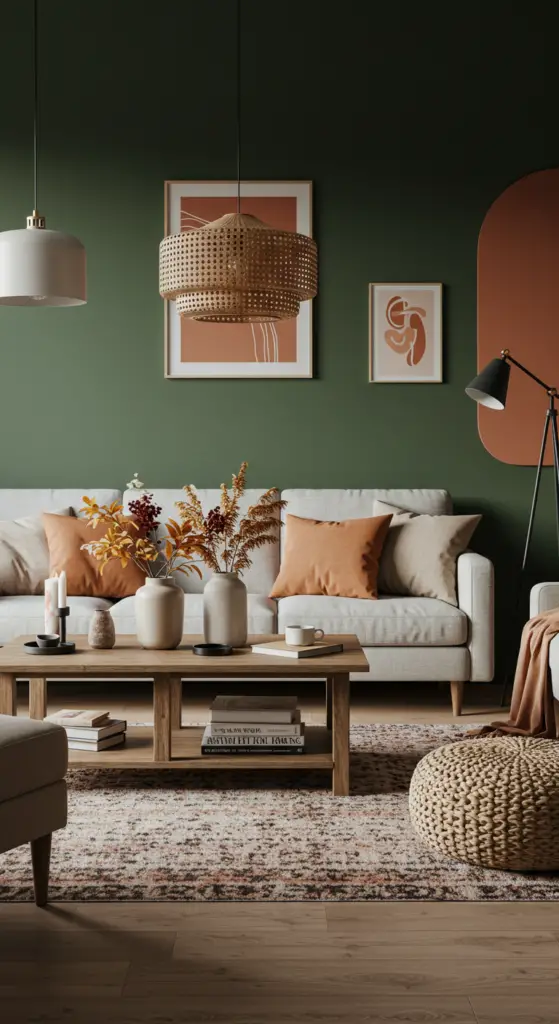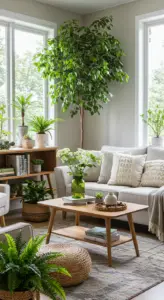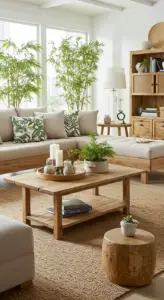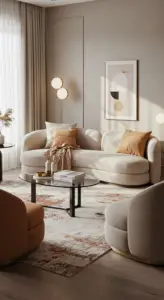1. Sustainable Luxury: Eco-Friendly Materials for Chic Interiors

Sustainable Luxury: Eco-Friendly Materials for Chic Interiors
In today’s home decor landscape, the intersection of sustainability and luxury is more prominent than ever. Homeowners seek eco-friendly materials that not only minimize environmental impact but also exude elegance. Here’s how to achieve a chic interior with sustainable luxury.
Current Trends in Sustainable Materials
Natural materials like bamboo, cork, and reclaimed wood are gaining traction. These options are not only renewable but also bring unique textures and warmth to your space. Additionally, consider using:
- Recycled Glass: Perfect for decorative items and fixtures.
- Organic Fabrics: Such as organic cotton, linen, and hemp for upholstery.
- Low-VOC Paints: To ensure healthier indoor air quality.
Expert Tips for Implementation
To incorporate these materials effectively, follow these steps:
- Assess Your Space: Identify areas that can benefit from sustainable materials.
- Choose Key Features: Opt for standout pieces like a reclaimed wood dining table or a cork accent wall.
- Mix and Match: Blend eco-friendly materials with luxury finishes for a balanced look.
Avoid Common Mistakes
While embracing sustainable luxury, avoid these pitfalls:
- Overloading on trends without considering longevity.
- Neglecting maintenance of natural materials.
- Choosing aesthetics over functionality.
Best Practices for Chic Interiors
Ultimately, sustainable luxury is about making informed choices that reflect your style while caring for the planet. Prioritize quality over quantity, and remember that each sustainable choice contributes to a more elegant and eco-conscious home.
2. Biophilic Design: Bringing Nature Indoors with Green Touches
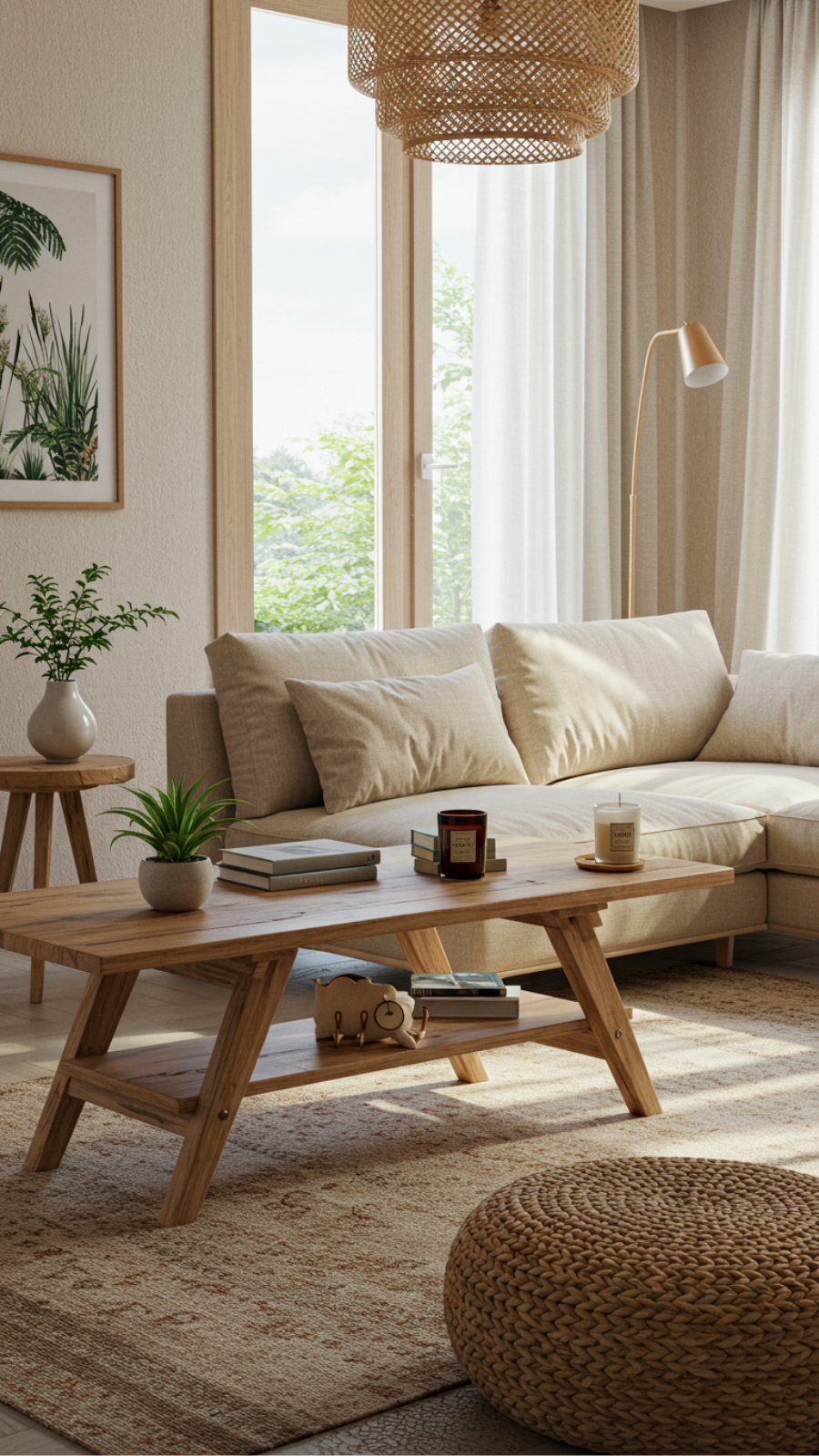
Biophilic Design: Bringing Nature Indoors with Green Touches
Incorporating biophilic design into your home decor is not just a trend; it’s a lifestyle choice that enhances well-being by connecting us with nature. This design philosophy emphasizes the integration of natural elements into our living spaces, creating a soothing environment that promotes relaxation and creativity.
Current Trends in Biophilic Design
Today’s homeowners are increasingly seeking to bring the outdoors inside. Some popular trends include:
- Indoor plants: Incorporating a variety of greenery, from succulents to large potted trees.
- Natural materials: Utilizing wood, stone, and bamboo for furniture and decor.
- Natural light: Maximizing daylight through large windows or skylights.
Expert Tips for Implementing Biophilic Design
To effectively incorporate green touches into your home, consider the following expert advice:
- Start small: If you’re new to biophilic design, begin with a few houseplants in your living room or kitchen.
- Layer textures: Mix different natural materials to create depth and visual interest.
- Use colors from nature: Opt for earthy tones like greens, browns, and blues to evoke a calming atmosphere.
Common Mistakes to Avoid
When bringing nature indoors, avoid these common pitfalls:
- Overcrowding with plants: Select a few key pieces to avoid a cluttered look.
- Ignoring maintenance: Choose plants that suit your lifestyle and indoor conditions for easier care.
Best Practices for a Successful Biophilic Space
To create a harmonious biophilic design:
- Incorporate a variety of plant sizes and types to create visual balance.
- Use furniture that complements natural elements, such as a reclaimed wood coffee table.
By following these guidelines, you can transform your home into a serene oasis that reflects the beauty of the natural world. Embrace the principles of biophilic design, and enjoy the refreshing benefits of bringing nature indoors.
3. Maximalism Revived: Bold Colors and Patterns for Expressive Spaces
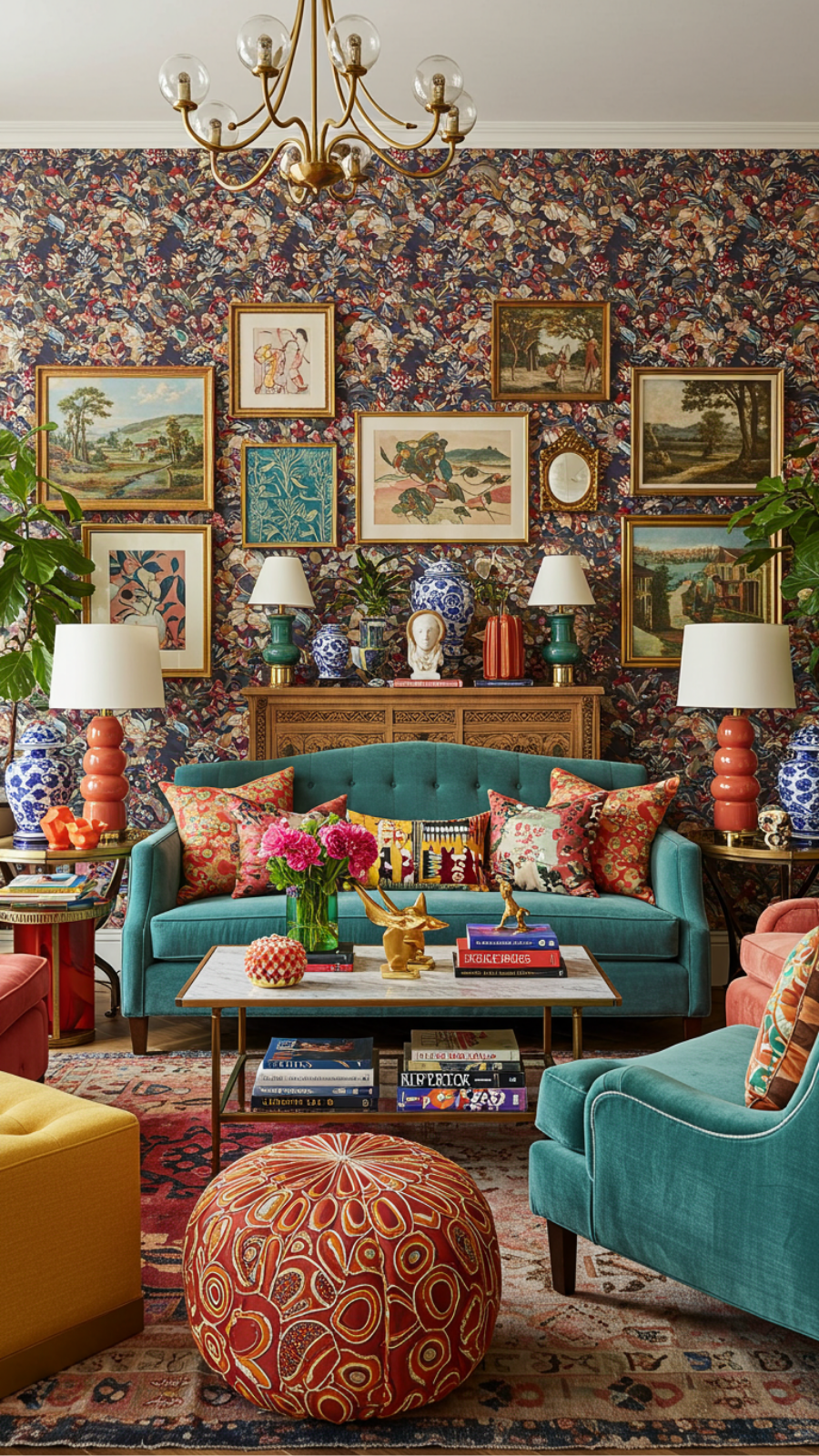
Maximalism Revived: Bold Colors and Patterns for Expressive Spaces
As home decor trends evolve, maximalism is making a triumphant return, allowing homeowners to create vibrant, expressive spaces through bold colors and intricate patterns. This design philosophy encourages individuality and creativity, breaking free from the constraints of minimalism.
Current Trends in Maximalism
In 2023, maximalism is characterized by:
- Layered Textures: Combine various materials like velvet, silk, and natural fibers for a rich tactile experience.
- Statement Wallpaper: Opt for oversized floral or geometric prints to create an eye-catching feature wall.
- Eclectic Art Displays: Mix frames and styles to showcase a collection of artwork that reflects your personality.
Expert Tips for Achieving a Maximalist Aesthetic
To successfully incorporate maximalism into your home, follow these steps:
- Choose a Color Palette: Start with a base color and select complementary hues. Think jewel tones or vibrant pastels that resonate with your style.
- Mix Patterns Wisely: When combining patterns, ensure they share a common color or theme to avoid visual chaos.
- Layer Decor Items: Utilize shelves, tables, and walls to display an array of decorative objects, ensuring each piece contributes to the overall theme.
Common Mistakes to Avoid
While maximalism is about freedom, there are pitfalls to watch out for:
- Overcrowding: Less is often more; leave some space for the eye to rest.
- Ignoring Balance: Distribute colors and patterns evenly throughout the room to maintain harmony.
- Neglecting Functionality: Ensure your space remains practical and comfortable, even as it embraces bold design.
By embracing the principles of maximalism, you can transform your home into a vibrant reflection of your personal style. Remember, the key lies in combining elements thoughtfully while allowing your creativity to shine.
4. Smart Home Integration: Tech Meets Aesthetics in Home Decor
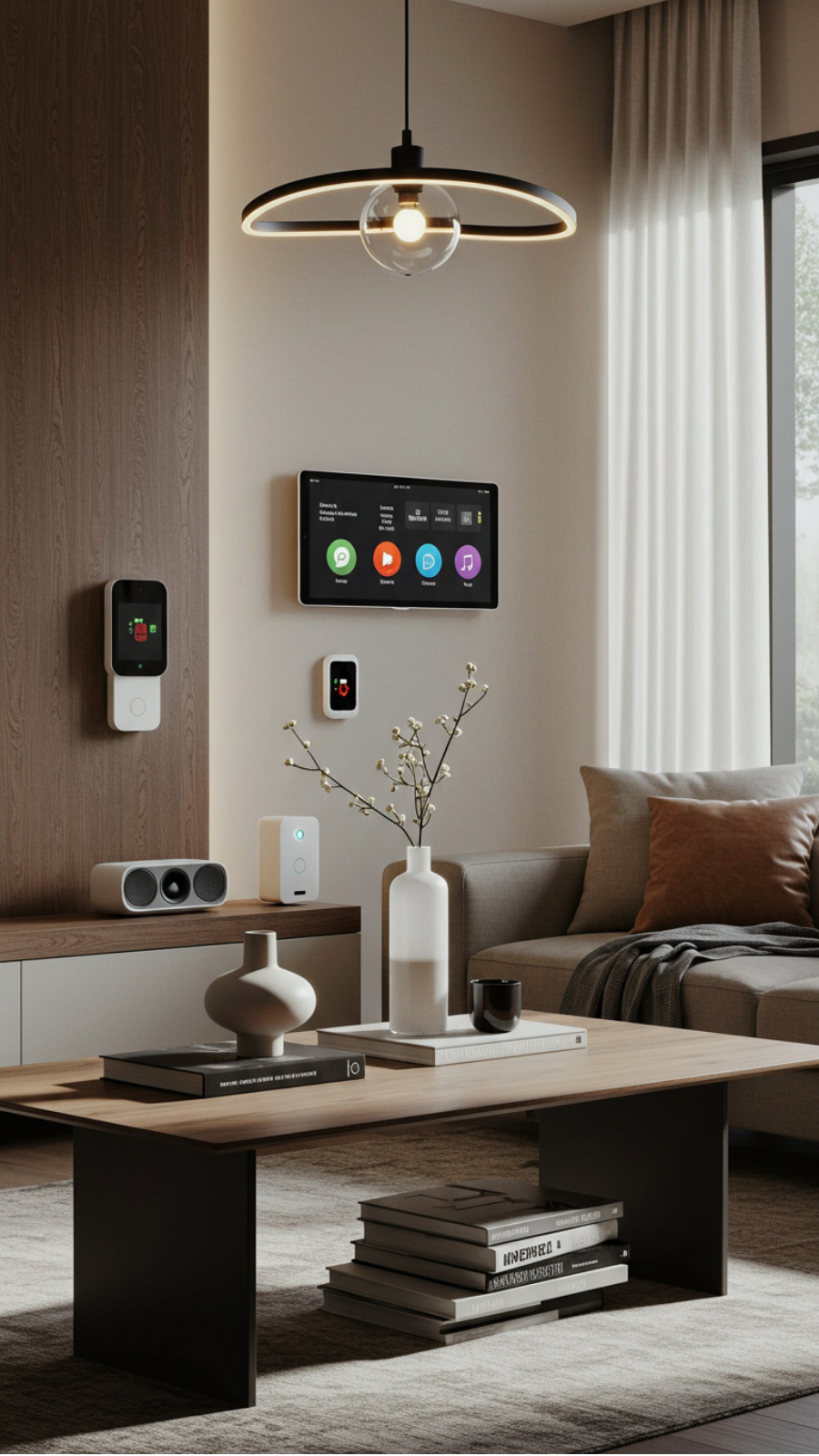
Smart Home Integration: Tech Meets Aesthetics in Home Decor
In the modern age of home decor, smart home integration is revolutionizing how we interact with our living spaces. Merging technology with aesthetics not only enhances functionality but also elevates the overall ambiance of your home. Here’s how to seamlessly blend smart tech into your decor.
Current Trends in Smart Home Decor
Today, consumers are gravitating towards devices that are both stylish and functional. Popular trends include:
- Smart Lighting: Use LED bulbs that can change colors to match your mood or decor.
- Voice-Activated Assistants: Devices like Amazon Echo or Google Home can control your lights, thermostat, and more, all while blending into your decor.
- Smart Thermostats: Devices like Nest not only save energy but also come in sleek designs that complement modern interiors.
Expert Tips for Integration
To achieve a harmonious blend of technology and decor, consider these expert tips:
- Choose devices that match your interior style. For example, if you have a minimalist decor, opt for smart devices with clean lines.
- Incorporate technology subtly. Use smart plugs to hide unsightly cords and keep surfaces tidy.
- Layer your lighting with smart bulbs that can adjust brightness and color to enhance the mood.
Avoid Common Mistakes
While integrating smart tech, be wary of:
- Overcomplicating your setup. Start with a few devices and expand as you become comfortable.
- Neglecting compatibility. Ensure your devices work together seamlessly for a cohesive smart home experience.
Best Practices for a Smart Decor
Ultimately, successful smart home integration requires balancing functionality with style. Aim for:
- Consistent color palettes that allow devices to blend in.
- Strategic placement of devices to enhance accessibility without disrupting aesthetics.
Incorporating smart home technology into your decor doesn’t have to be daunting. By following these guidelines, you can create a stylish, efficient, and inviting living space that meets modern-day demands.
5. Vintage Revival: Antique Finds and Retro Styles for Modern Homes
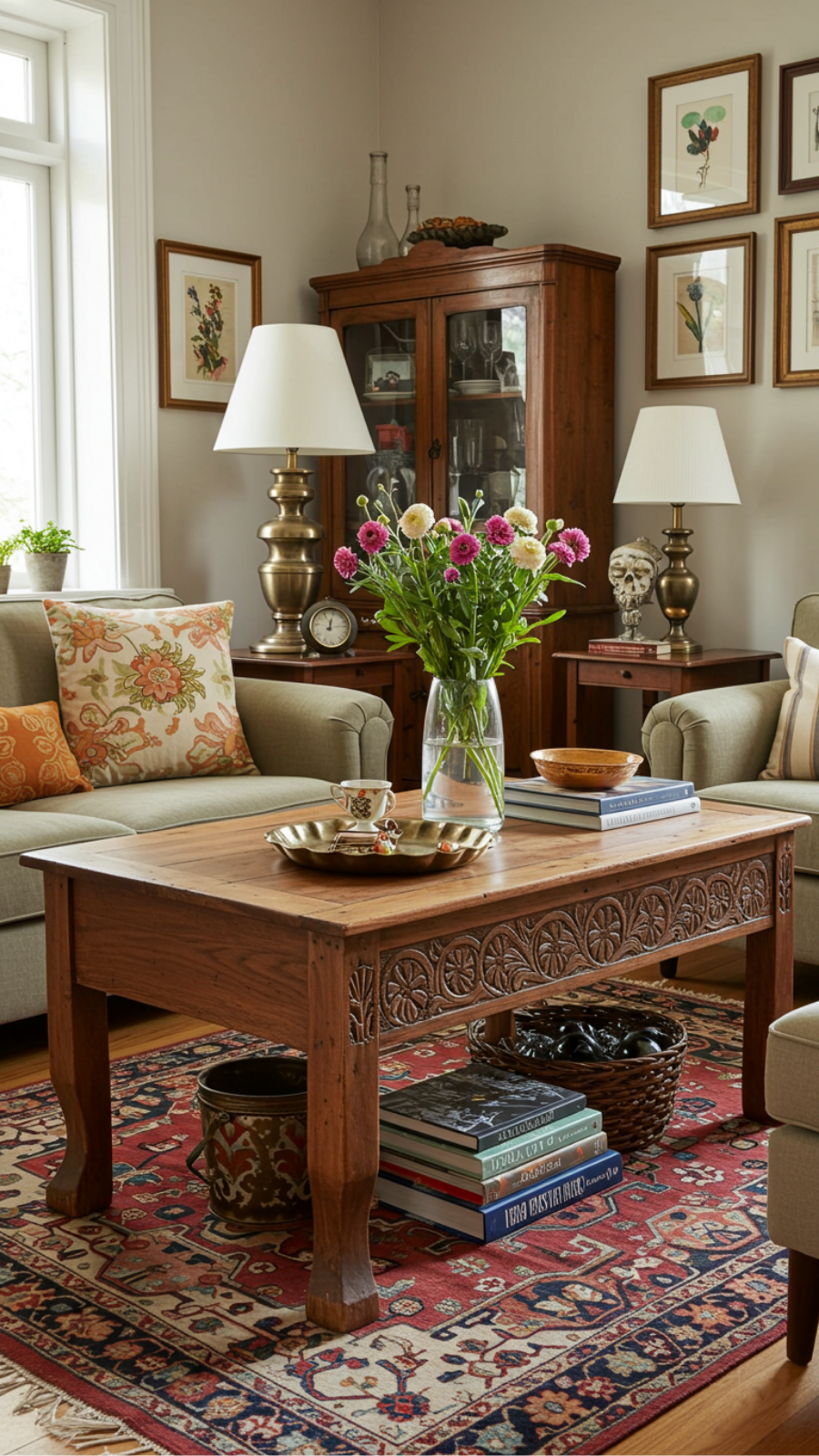
Vintage Revival: Antique Finds and Retro Styles for Modern Homes
Embracing the vintage revival trend can transform your home into a unique sanctuary that reflects both history and modernity. Combining antique finds and retro styles with contemporary decor creates a harmonious balance that is both inviting and stylish.
Incorporating Antique Finds
Start by sourcing antique furniture at flea markets, estate sales, or online marketplaces. Look for pieces that can serve as statement items, such as:
- Mid-century modern chairs
- Victorian side tables
- Art Deco lighting fixtures
These items not only add character but also tell a story, enhancing your space with a sense of nostalgia.
Modernizing Retro Styles
To seamlessly blend retro aesthetics with modern decor, consider these expert tips:
- Choose a color palette that complements both styles, such as muted pastels paired with bold primary colors.
- Incorporate vintage textiles, like a retro patterned rug, to add warmth and texture.
Avoiding Common Mistakes
While vintage decor is charming, it’s important to avoid overcrowding your space. Stick to a few key pieces and ensure they fit the overall design of your home. Additionally, be cautious with restoration—overdoing it can diminish the item’s historical value.
Best Practices for a Vintage Look
Mix and match vintage with contemporary items to create a curated look. For example, pair a rustic wooden dining table with sleek, modern chairs. This juxtaposition highlights the beauty of both styles while maintaining a cohesive space.
In summary, embracing the vintage revival trend involves thoughtful selection and integration of antique finds and retro styles into your modern home. With these expert insights, you can create a stunning, personalized atmosphere that celebrates the charm of the past while enjoying the comforts of the present.
6. Artisanal Touches: Handcrafted Decor for Unique Personalization

Artisanal Touches: Handcrafted Decor for Unique Personalization
In the world of home decor, artisanal touches are increasingly sought after for their ability to add unique personalization to any space. Handcrafted decor not only elevates the aesthetic of your home but also tells a story, connecting you to the artisans behind the work. This guide will explore current trends and expert tips to help you incorporate these one-of-a-kind pieces into your environment.
Current Trends in Handcrafted Decor
As consumers become more conscious of sustainability and authenticity, handcrafted decor is on the rise. Popular items include:
- Handmade ceramics and pottery
- Woven textiles, such as rugs and throws
- Custom woodwork, including furniture and wall art
Expert Tips for Incorporating Artisanal Touches
To seamlessly integrate handcrafted decor into your home, follow these steps:
- Choose a Focal Point: Select one or two standout pieces, like a large ceramic vase or a handwoven wall hanging, to serve as the centerpiece of a room.
- Mix Textures: Combine various materials such as wood, metal, and fabric for visual interest.
- Support Local Artisans: Explore local markets and online platforms to find unique items that resonate with your personal style.
Common Mistakes to Avoid
While incorporating handcrafted decor, be mindful of these pitfalls:
- Avoid overcrowding: Too many artisanal pieces can overwhelm a space. Less is often more.
- Neglecting scale: Ensure your handcrafted items are appropriately sized for your space.
By following these best practices, you can create a home that reflects your individuality while supporting artisans and celebrating craftsmanship. Embrace the beauty of handcrafted decor, and let your personality shine through!
7. Mixed Media: Combining Textures for a Layered Home Look
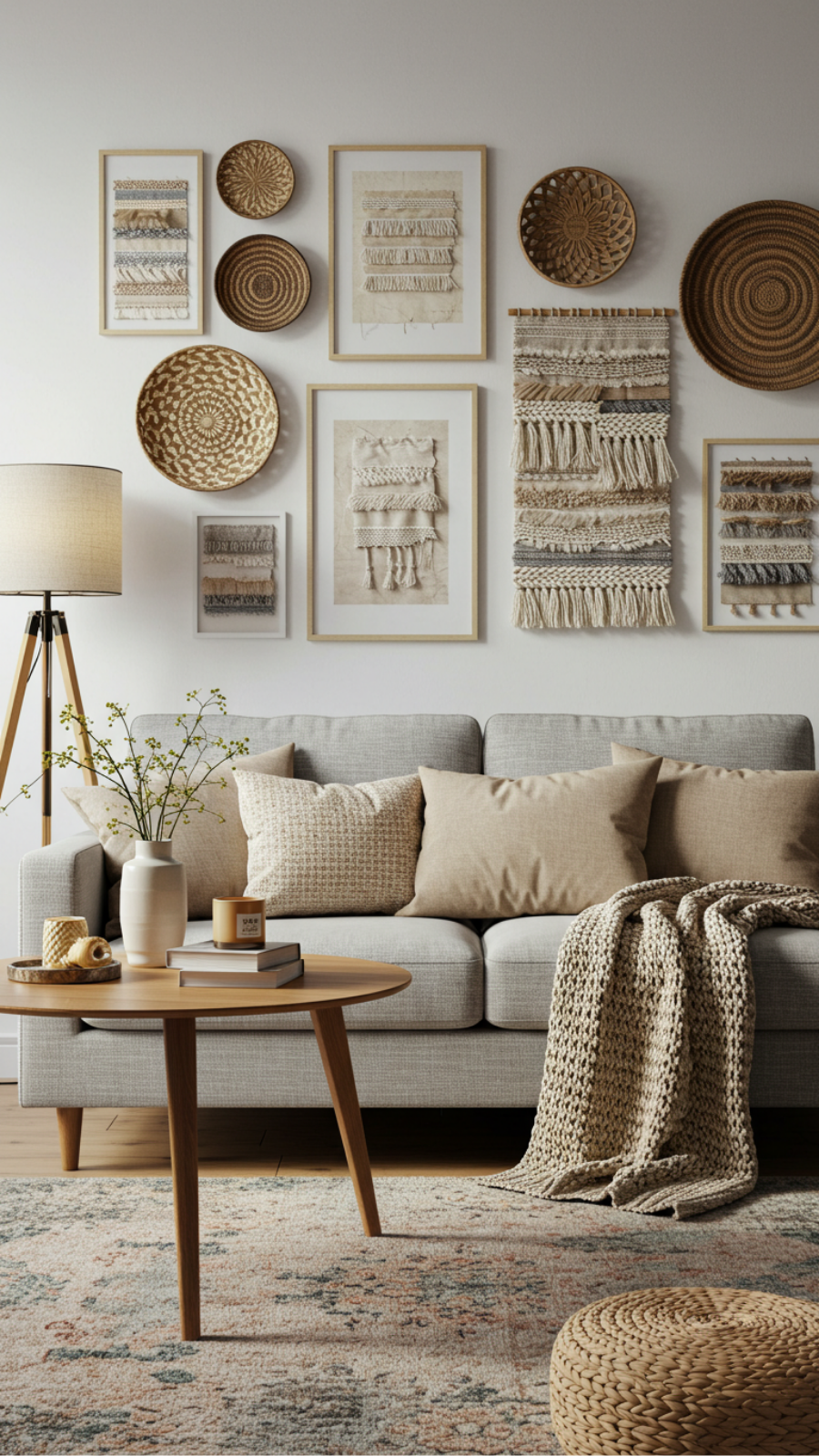
Mixed Media: Combining Textures for a Layered Home Look
Creating a layered home look through mixed media is an exciting trend in home decor that allows you to express your personality while adding depth and interest to your space. By skillfully combining various textures, you can create an inviting atmosphere that feels both sophisticated and comfortable.
Expert Tips for Layering Textures
- Start with a Base: Choose a neutral palette for your walls and larger furniture pieces. This provides a versatile backdrop for layering.
- Mix Materials: Combine natural elements like wood and stone with softer fabrics such as velvet and linen. For example, a wooden coffee table paired with a plush velvet sofa can create a stunning contrast.
- Incorporate Accessories: Use decorative pillows, throws, and rugs to introduce different textures. A chunky knit throw can add warmth to a sleek leather couch.
Step-by-Step Guidance
- Choose your main texture (e.g., leather).
- Select complementary textures (e.g., cotton, wool, or metal).
- Layer them in various areas, like your living room or bedroom, to create a cohesive look.
Common Mistakes to Avoid
When experimenting with mixed media, avoid overwhelming the space with too many contrasting textures. Instead, aim for balance by limiting your palette to three or four key textures. Additionally, ensure that your selections complement each other in terms of color and style.
Best Practices for a Cohesive Look
Always consider the scale and proportion of your items. For example, a large, heavy-textured item can anchor a room, while smaller pieces can add nuanced details. Remember, the goal is to create harmony through contrast, not chaos.
By following these expert tips and tricks, you’ll master the art of mixed media, transforming your home into a layered and inviting sanctuary.
8. Mood Lighting: Creating Ambiance with Innovative Lighting Designs
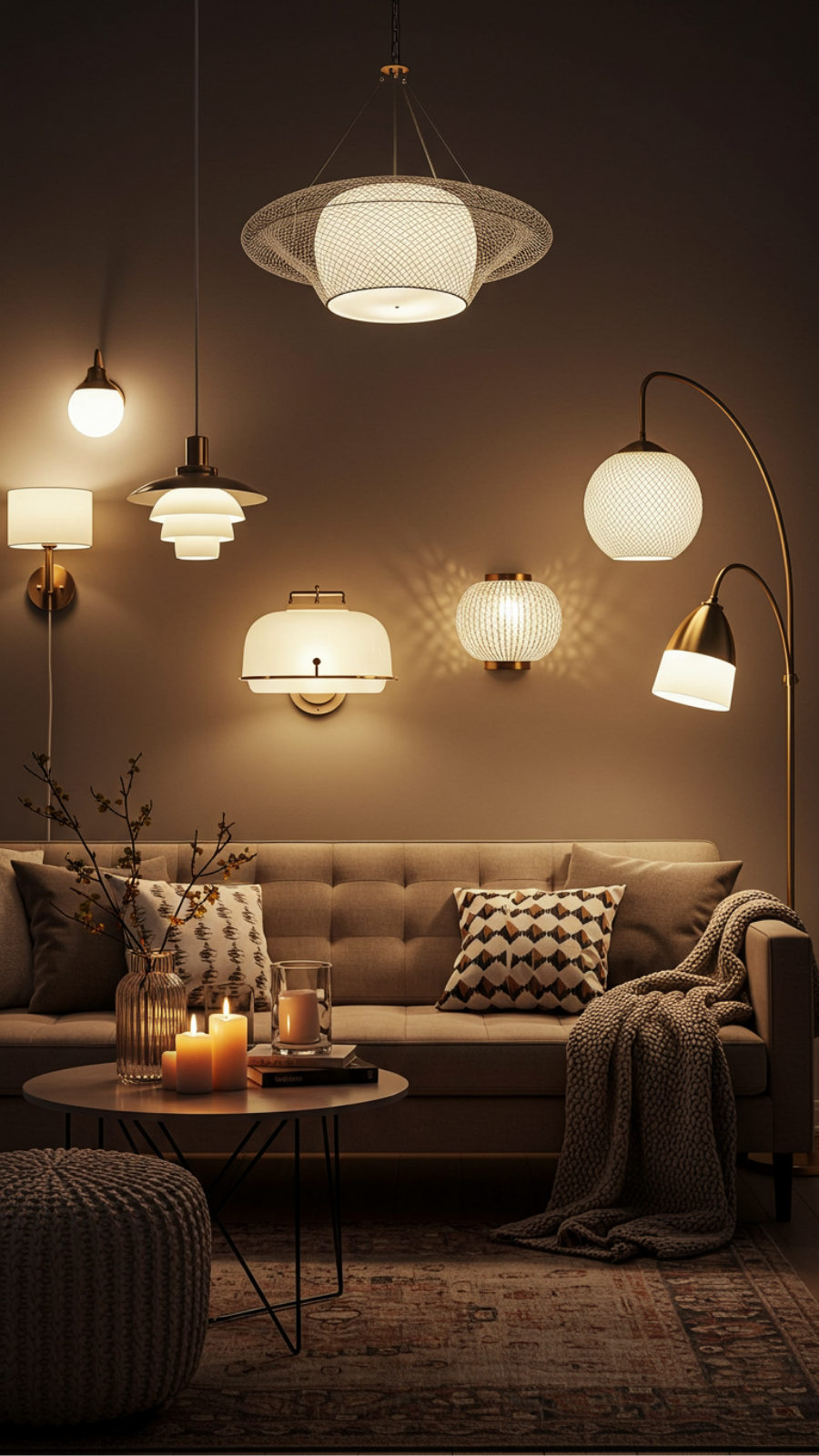
Mood Lighting: Creating Ambiance with Innovative Lighting Designs
Mood lighting is a powerful element in home decor that enhances ambiance and elevates your living spaces. By strategically incorporating innovative lighting designs, you can transform any room into a cozy retreat or a vibrant social hub. Here are expert tips to help you achieve the perfect mood lighting.
Current Trends in Mood Lighting
In 2023, the trend leans towards multi-functional lighting solutions. Think about layering your lighting to create depth:
- Ambient lighting: Use ceiling fixtures or recessed lights to provide general illumination.
- Task lighting: Incorporate adjustable lamps for reading or workspaces.
- Accent lighting: Highlight art pieces or architectural features with spotlights or wall sconces.
Step-by-Step Guidance for Mood Lighting
- Assess the space: Start by evaluating the size and function of each room.
- Choose your fixtures: Select lighting that fits your style—modern, rustic, or eclectic.
- Layer your lights: Combine different light sources to create a balanced effect.
- Use dimmers: Install dimmer switches for customizable brightness levels.
Common Mistakes to Avoid
When designing mood lighting, be mindful of these pitfalls:
- Overly bright lighting that can create a harsh environment.
- Neglecting to consider the color temperature of light bulbs.
- Underestimating the importance of natural light during the day.
Best Practices for Successful Mood Lighting
To maximize the effectiveness of your mood lighting:
- Incorporate smart lighting systems for versatility.
- Experiment with colored LED bulbs for dynamic effects.
- Consider the height and placement of fixtures to enhance visual interest.
By following these expert tips and avoiding common mistakes, you can create a beautifully lit environment that reflects your personal style. Embrace innovative lighting designs to elevate your home decor and enjoy the transformative power of mood lighting.
9. Statement Ceilings: Transforming Spaces with Bold Ceiling Treatments
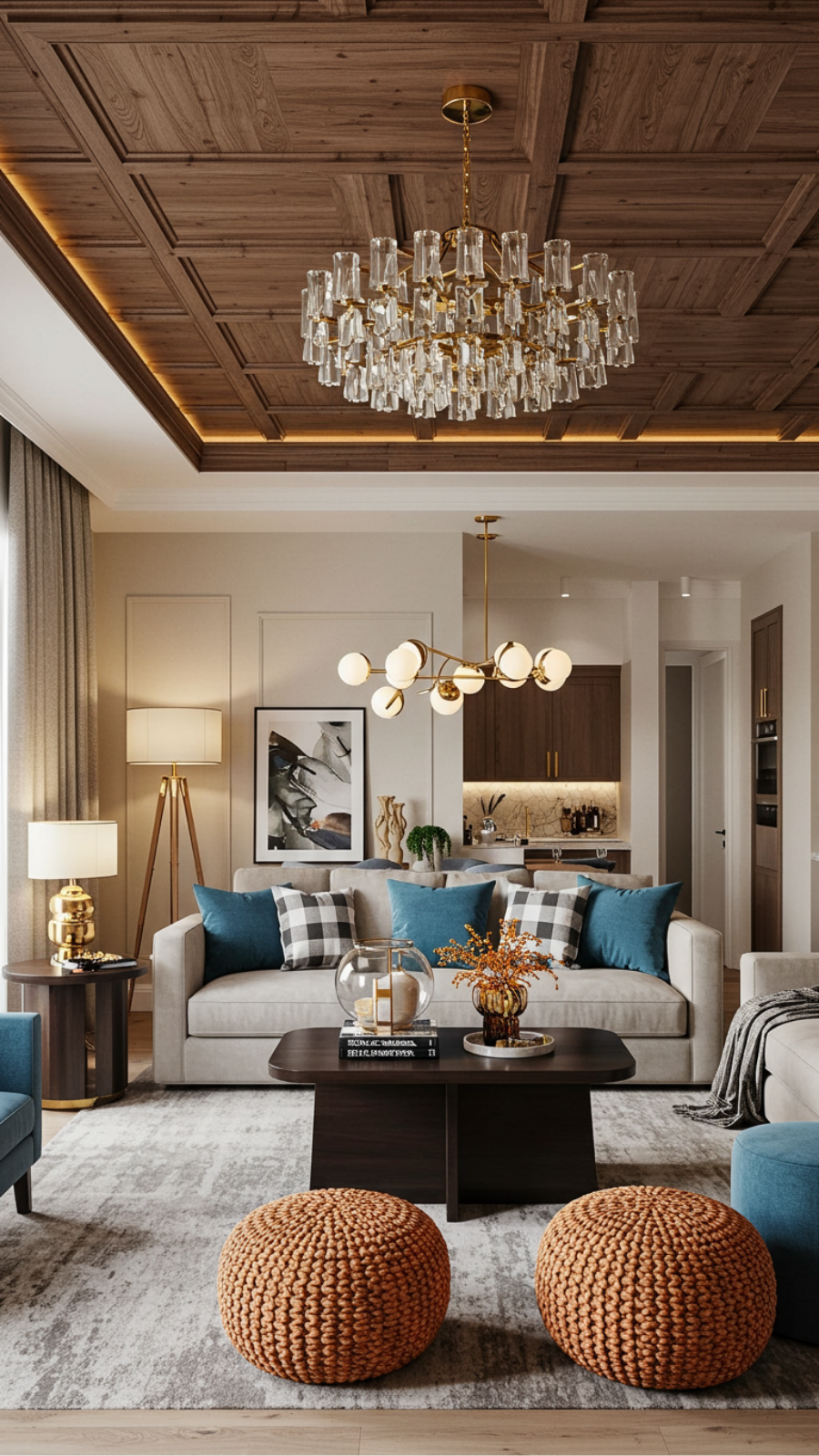
Statement Ceilings: Transforming Spaces with Bold Ceiling Treatments
In the realm of home decor, statement ceilings are emerging as a transformative element that can dramatically alter the ambiance of any room. From painted designs to intricate moldings, bold ceiling treatments offer an opportunity to express personal style while enhancing spatial aesthetics.
Current Trends in Ceiling Treatments
As we embrace trends that emphasize individuality, statement ceilings are gaining popularity. Here are some trending ideas:
- Bold Paint Colors: Rich hues like deep navy or emerald green create a striking contrast against lighter walls.
- Textured Finishes: Techniques such as stucco or wood paneling add depth and interest.
- Geometric Patterns: Modern designs using stencils or wallpapers can create a visually captivating focal point.
Expert Tips for Implementation
To effectively create a statement ceiling, follow these expert tips:
- Start with a Plan: Visualize the overall design and how the ceiling complements the room’s decor.
- Select the Right Finish: Choose materials that align with your home’s style, whether contemporary or traditional.
- Consider Lighting: Use integrated lighting to highlight your ceiling treatment, enhancing its impact.
Avoid Common Mistakes
While statement ceilings can elevate a space, here are pitfalls to avoid:
- Choosing overly busy patterns that overwhelm the room.
- Neglecting to test paint colors in natural light.
- Forgetting about scale—ensure the treatment is proportionate to the room size.
By incorporating these best practices, your ceiling can become a captivating feature that transforms your home. Embrace the trend of statement ceilings, and let them inspire creativity and bold choices in your living spaces.
10. Transitional Spaces: Blending Modern and Traditional Decor Elements
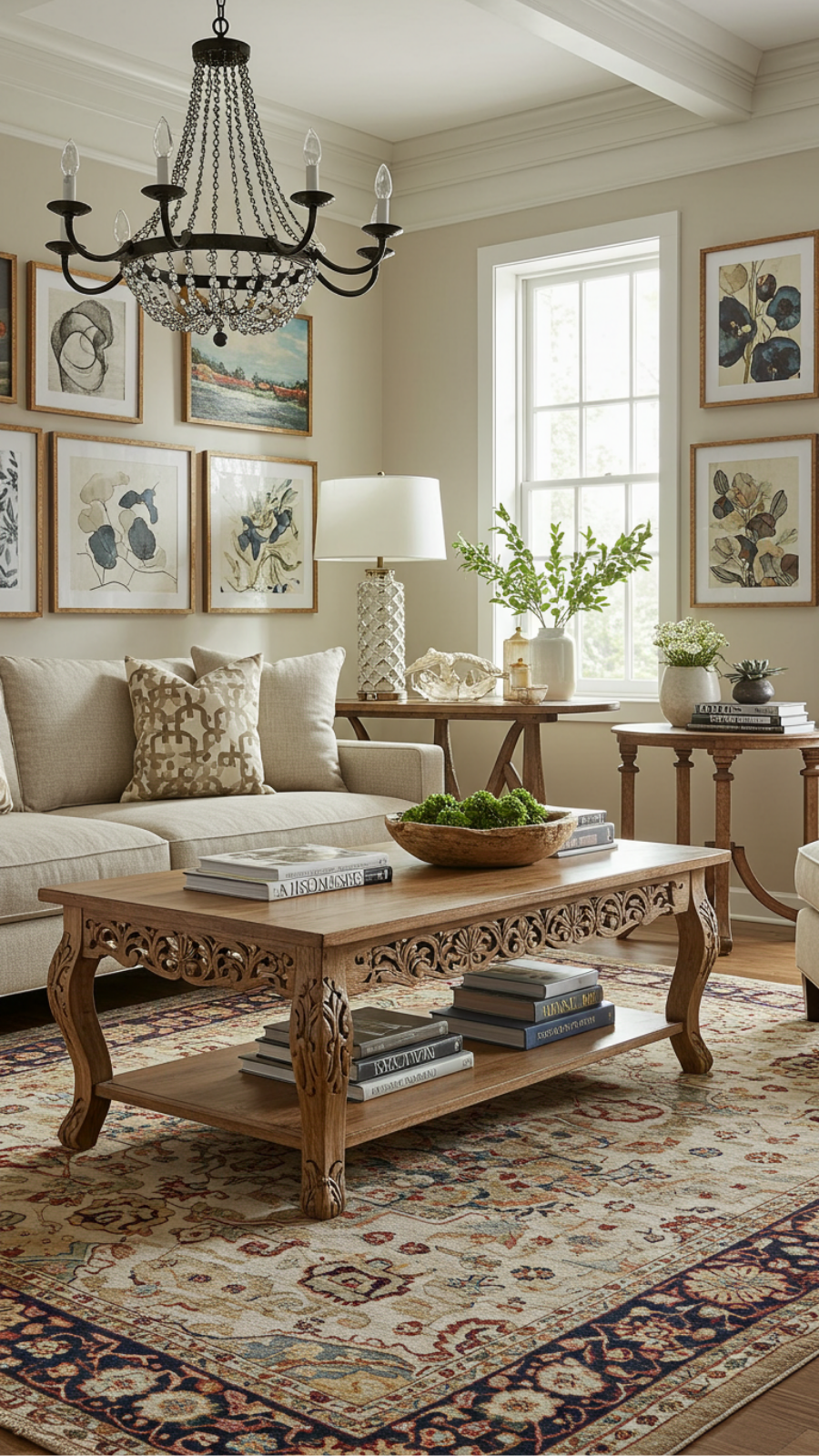
Transitional Spaces: Blending Modern and Traditional Decor Elements
Creating transitional spaces that blend modern and traditional decor elements is an art that can elevate your home’s aesthetic. This style combines the clean lines and simplicity of modern design with the warmth and character of traditional decor, resulting in a harmonious environment that feels both timeless and current.
Current Trends in Transitional Decor
One of the most notable trends is the use of mixed materials. For instance, pairing sleek metal accents with rich wood tones can create a striking visual contrast. Additionally, incorporating vintage pieces, such as an antique mirror or a classic armchair, alongside contemporary art or minimalist furniture fosters an inviting atmosphere.
Expert Tips and Tricks
- Choose a Neutral Palette: Start with a neutral color scheme as your base, then add pops of color through accessories.
- Layer Textures: Combine various textures like wool, linen, and leather to add depth to your space.
- Use Statement Pieces: Incorporate one or two bold items, like a modern chandelier or a vintage rug, to anchor the room.
Step-by-Step Guidance
- Assess Your Space: Identify existing elements that are modern or traditional.
- Define Your Style: Decide on a focal point, whether it’s a piece of art or furniture.
- Mix and Match: Experiment with different decor items until you find a balance that feels natural.
Common Mistakes to Avoid
When blending styles, avoid overwhelming the space with too many contrasting elements. Stick to a cohesive color palette and be mindful of scale—ensuring that the size of your furniture complements the room’s dimensions is essential for a balanced look.
Best Practices for Transitional Decor
Ultimately, transitional decor should feel effortless. Regularly assess your space and be open to evolving your style as trends change. By thoughtfully blending modern and traditional elements, you can create a timeless environment that resonates with your personal aesthetic.
Frequently Asked Questions
How can I incorporate sustainable luxury into my home decor?
To incorporate sustainable luxury in your decor, focus on eco-friendly materials like reclaimed wood, organic textiles, and recycled metals. Choose high-quality, timeless pieces that not only enhance aesthetics but also reduce environmental impact. Look for brands that prioritize sustainability and craftsmanship to ensure your home reflects both elegance and responsibility.
Why is biophilic design important for modern interiors?
Biophilic design is important because it enhances well-being by bringing the outdoors inside, improving air quality, and creating a calming atmosphere. Incorporating elements like indoor plants, natural light, and water features fosters a connection with nature, which can increase productivity and reduce stress. To implement this, start with easy-to-maintain plants and choose natural materials that mimic outdoor environments.
What are some easy ways to embrace maximalism in my home decor?
To embrace maximalism, start by selecting bold colors and mixing various patterns in your space. Layer textiles, display eclectic artwork, and curate a collection of decorative objects that reflect your personality. The key is to create a cohesive look by balancing vibrant elements with neutral backdrops to avoid visual chaos.
How do I effectively integrate smart home technology into my decor?
To effectively integrate smart home technology, choose devices that complement your existing decor. Opt for sleek, stylish smart speakers or lighting that blend seamlessly with your interior design. Additionally, consider using smart hubs that allow you to control multiple devices with a single app, enhancing both functionality and aesthetics without cluttering your space.
What are the best practices for incorporating vintage decor into a modern home?
When incorporating vintage decor, mix antique finds with contemporary items to create a balanced aesthetic. Choose a few standout pieces, like a retro lamp or a vintage rug, and pair them with modern furniture to keep the look fresh. This approach not only adds character but also creates a unique space that tells a story while maintaining a modern feel.

